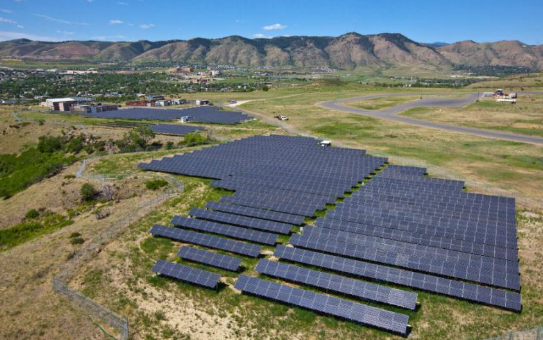The U.S. Department of Energy (DOE) today invested $9.5 million in four new projects supporting social science research that examines the ways that siting practices can influence public attitudes toward and permitting of large-scale solar facilities. The research will generate actionable insights that improve outcomes for host communities—particularly those that are underserved—and the solar industry. This work supports DOE’s goal to achieve 100% clean electricity by 2035, which requires deploying hundreds of gigawatts of solar capacity in the next 10 years.
“Solar energy can support regional sustainability goals, unlock stronger economies, and increase access to reliable and affordable clean energy resources,” said Jeff Marootian, Principal Deputy Assistant Secretary for Energy Efficiency and Renewable Energy. “These projects will support DOE’s commitment to helping communities across the nation make informed decisions about their own energy needs and ensure projects provide meaningful benefits to the host community.”
According to research from the Lawrence Berkeley National Laboratory published this year, solar project developers say community opposition is among the top three leading causes of project cancellations and that it has ramped up in the last five years. Another study found that, in communities within three miles of a project, positive attitudes toward local large-scale solar projects outnumber negative attitudes by nearly a three-to-one margin. These research projects will advance understanding of these social dynamics and enable communities and developers to find solutions that benefit host communities, solar developers, and the climate.
The organizations receiving funding under the Solar Energy Evolution and Diffusion Studies 4 (SEEDS 4) program include:
- Michigan State University (East Lansing, Michigan): Researchers will evaluate the potential to speed up large-scale solar siting and permitting processes while also reducing community burdens and improving procedural justice and energy equity. The project will study ten large-scale projects in four different regions of the country. (Award amount: $2.5 million)
- Princeton University (Princeton, New Jersey): Researchers will assess the potential for Community Benefit Agreements—legal agreements between community groups and large-scale solar developers—to deliver tangible benefits to communities, build credibility in solar projects, and strengthen trust across stakeholder groups. (Award amount: $2 million)
- Solar and Storage Industries Institute (Washington, D.C.): This project will leverage the stakeholder-driven Solar Uncommon Dialogue, convened by the Stanford Woods Institute for the Environment, Solar Energy Industries Association, and The Nature Conservancy, to identify innovative community engagement practices for siting and permitting large-scale solar projects and evaluate their impact on outcomes for host communities and the solar industry. (Award amount: $2.5 million)
- University of Pennsylvania (Philadelphia, Pennsylvania): Researchers will evaluate how different siting practices shape community support for large-scale solar projects and how those dynamics differ across different types of communities. (Award amount: $2.5 million)
The SEEDS 4 funding program is funded by DOE’s Solar Energy Technologies Office in the Office of Energy Efficiency and Renewable Energy. It builds on three previous initiatives spanning more than a decade—SEEDS, SEEDS 2-SES and SEEDS 3. These programs have supported a wealth of research to understand the social elements of solar energy adoption, generating strategies to speed solar deployment while ensuring that all Americans benefit from the clean energy transition.
In addition to funding social science, DOE is supporting state and local capacity for siting and permitting by investing in state-based collaboratives that provide resources to local communities as they plan for and evaluate large-scale renewable energy projects.
Learn more about the Solar Energy Technologies Office, research on the social science of solar adoption, and large-scale solar siting.














